
Separation anxiety is a common issue among Maltese dogs that can cause significant distress for both the pet and the owner. This condition often results in undesirable behaviors such as excessive barking, destructive chewing, and attempts to escape when left alone.
Understanding how to handle separation anxiety in Maltese dogs is crucial for their overall well-being and your peace of mind. This guide aims to provide you with effective strategies, training techniques, and professional advice to help your Maltese feel more secure and reduce their anxiety when you are not around. Addressing separation anxiety early and consistently, can help you ensure your Maltese lives a less stressful and happier life when you’re not there.
Understanding Separation Anxiety in Maltese Dogs
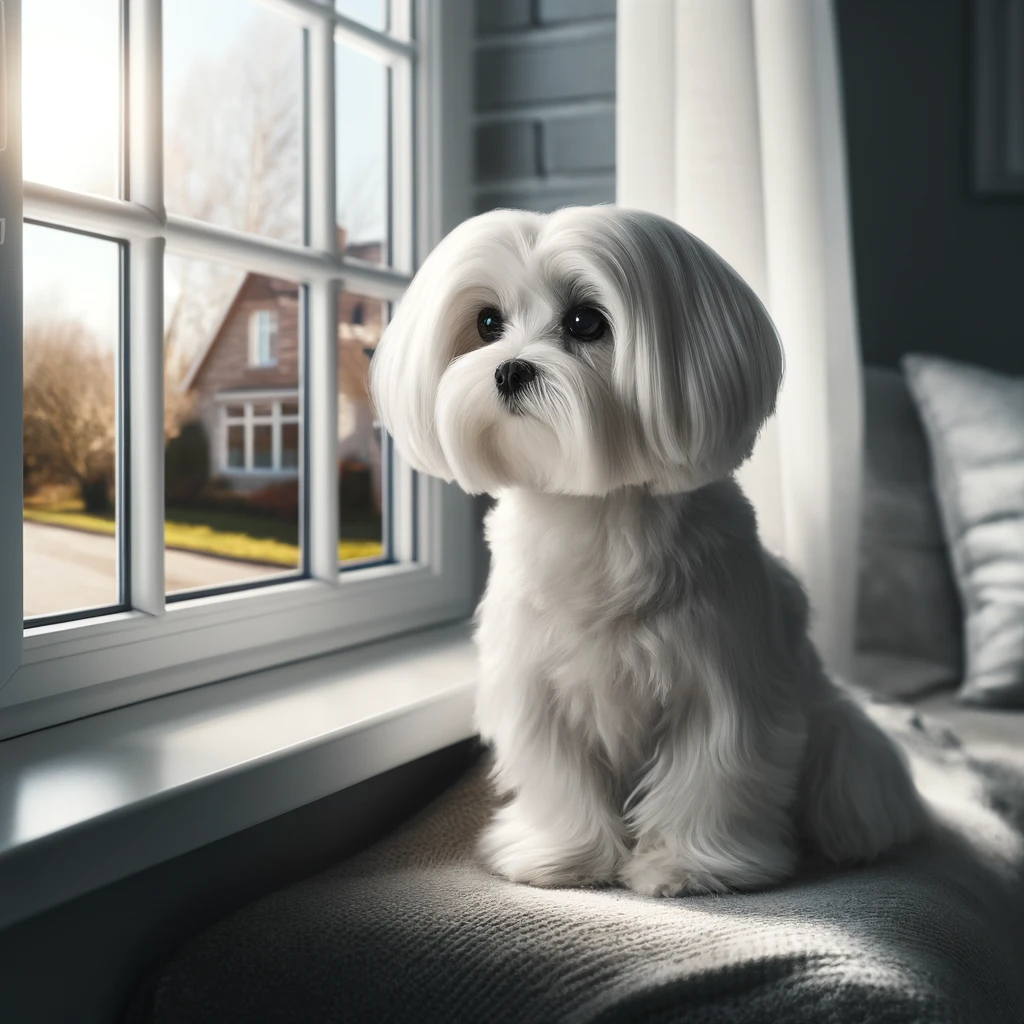
Separation anxiety in Maltese dogs is characterized by intense distress and behavioral issues when they are left alone. This anxiety can stem from various factors, including genetics, lack of early socialization, or sudden changes in their environment. Unlike typical boredom, separation anxiety leads to extreme behaviors that can be challenging to manage.
Maltese dogs often exhibit a range of symptoms that indicate separation anxiety, such as excessive barking, whining, howling, and destructive behaviors like chewing or digging. They may also attempt to escape, pace around the house, or show signs of physical distress such as drooling and panting. These symptoms typically occur shortly after the owner leaves and can last until they return.
The underlying causes of separation anxiety in Maltese dogs can vary. Genetic predisposition plays a significant role, as some dogs are naturally more prone to anxiety. Early socialization is crucial - dogs that aren't exposed to various environments and experiences during their formative weeks and months may struggle with being alone. Additionally, sudden changes in the dog's environment, such as moving to a new home, changes in household members, or alterations in the owner's schedule, can trigger separation anxiety.
RELATED: Maltese Breed Information
Symptoms of Separation Anxiety in Maltese Dogs
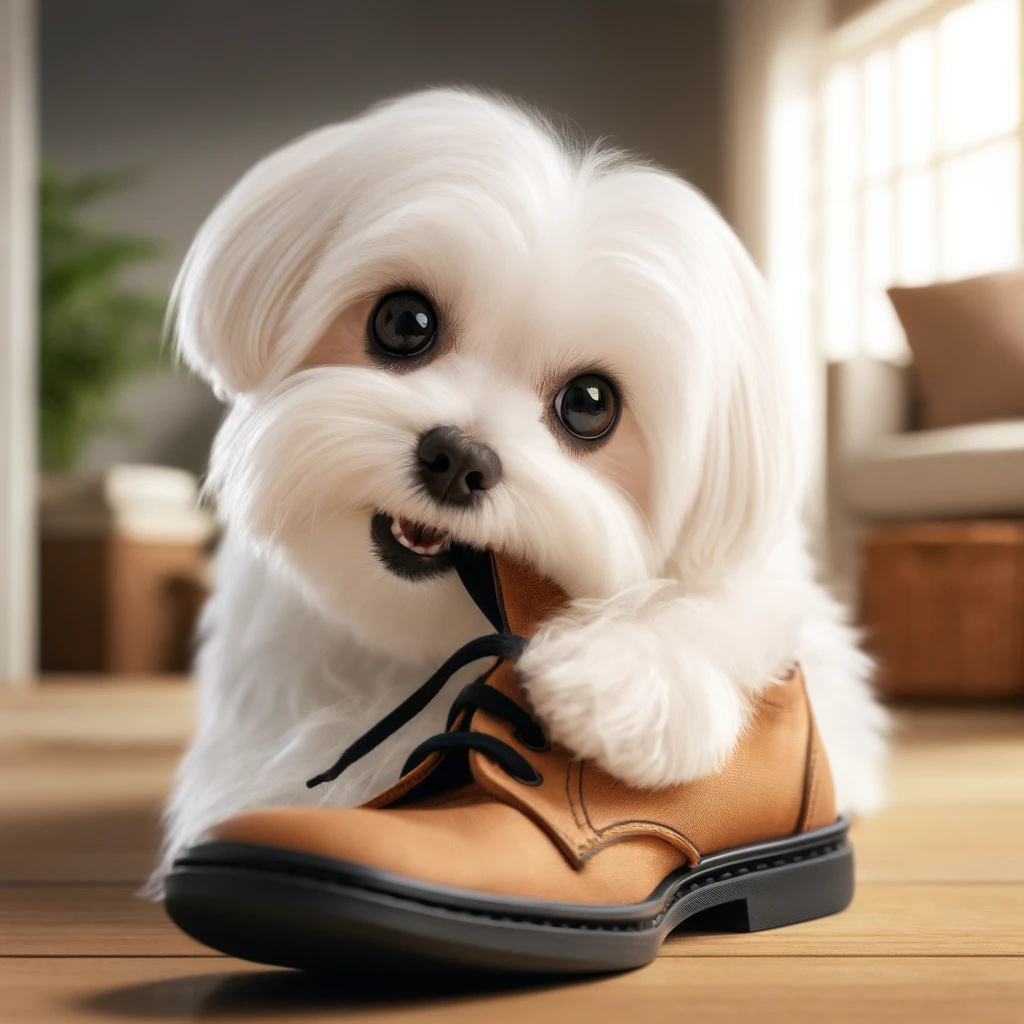
Knowing the symptoms of separation anxiety in Maltese dogs is essential for early intervention and effective management. These symptoms can be broadly categorized into behavioral and physical signs, each indicating the dog's distress when left alone.
Behavioral Signs
Excessive Barking and Whining - Maltese dogs with separation anxiety will often bark, whine, or howl persistently when they are alone. This vocalization usually starts soon after the owner leaves and can continue until they return.
Destructive Behavior - Dogs may chew on furniture, shoes, or other household items. They might also dig or claw at doors and windows in an attempt to escape and find their owner.
Attempts to Escape - Dogs with severe separation anxiety may try to escape from the house or crate. This can involve digging, chewing through barriers, or even jumping out of windows, which poses significant safety risks.
Pacing and Restlessness - Repetitive pacing, often in a fixed pattern, is another sign of anxiety. This behavior is typically observed when the dog is left alone and can indicate their distress and inability to settle.
Physical Symptoms
Drooling and Panting - Excessive drooling and panting are physical signs of anxiety. These symptoms can appear within minutes of the owner’s departure and are a clear indicator of the dog's stress.
Increased Heart Rate - An anxious dog might have a noticeably faster heartbeat. This is a physical manifestation of their fear and panic.
Accidents Indoors - Even house-trained dogs may urinate or defecate indoors when experiencing separation anxiety. This is not a sign of poor training but rather a response to stress.
Causes of Separation Anxiety in Maltese Dogs
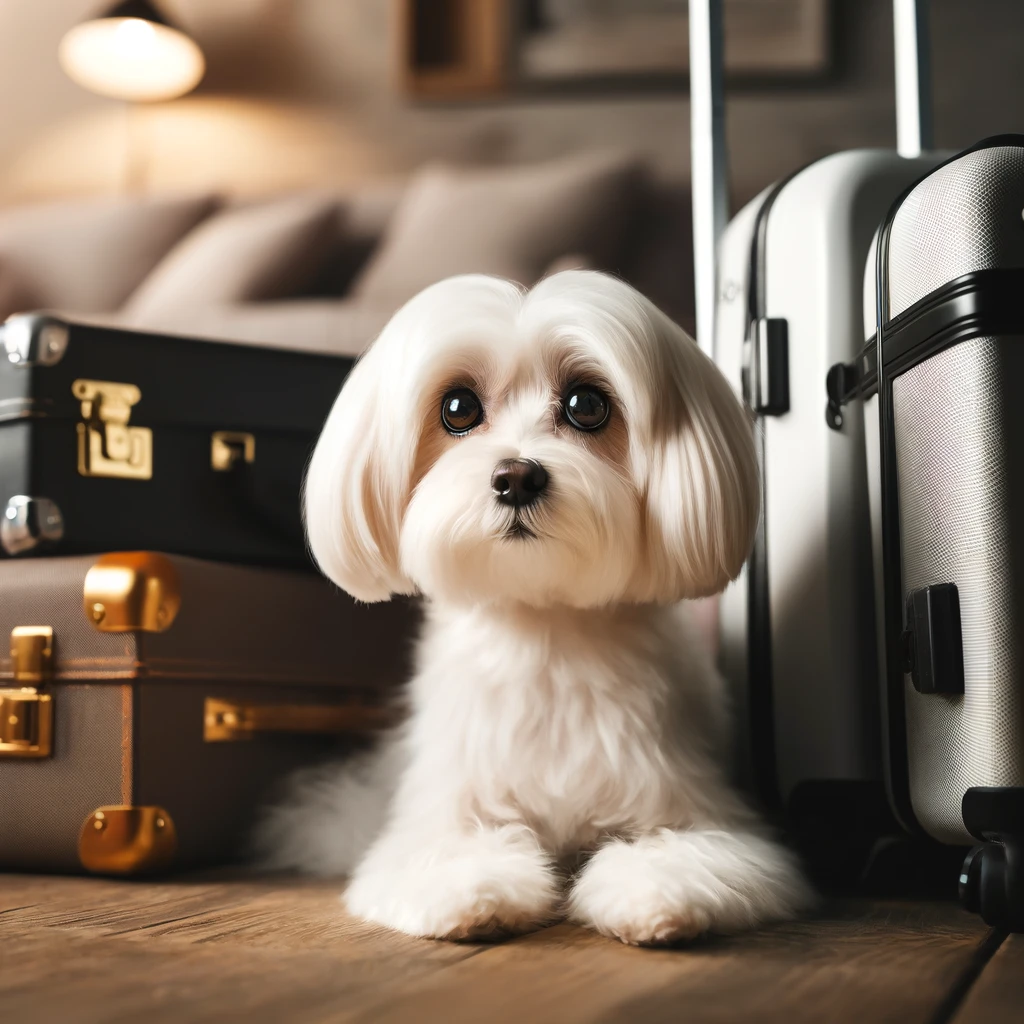
Various factors contribute to the development of separation anxiety, ranging from genetic predisposition to environmental influences.
Genetic Factors
Breed Characteristics: Maltese dogs are renowned for their affectionate and loyal nature. This breed tends to form strong bonds with their owners, which can make the Maltese more susceptible to separation anxiety when left alone.
Inherited Traits: Some dogs may have a genetic predisposition to anxiety. If a dog's parents or previous generations exhibited anxiety, there is a higher likelihood that the dog will also develop similar issues.
Environmental Factors
Lack of Early Socialization: Early socialization is crucial for a dog's development. Maltese dogs that are not exposed to various environments, people, and experiences during their formative weeks and months may struggle with being left alone. This lack of exposure can make them more prone to anxiety when separated from their owners.
Changes in Routine: Sudden changes in the household routine, such as a new job that requires longer hours away from home, can trigger separation anxiety. Dogs thrive on consistency, and disruptions to their routine can lead to stress and anxiety.
Moving to a New Home: Relocating to a new environment can be stressful for dogs. The unfamiliar surroundings and scents can trigger anxiety, particularly if the dog has not had time to adjust to the new setting.
Past Experiences
Previous Trauma: Dogs that have experienced traumatic events, such as abandonment, abuse, or long periods of isolation, are more likely to develop separation anxiety. These past experiences can create a deep-seated fear of being left alone.
Rehoming or Reservation: Dogs that have been rehomed or reserved from shelters may have experienced previous separations from their owners. This history can contribute to anxiety when faced with the possibility of being left alone again.
Owner Behavior
Over-Attachment: Owners who are overly attentive and constantly with their Maltese dog may inadvertently contribute to separation anxiety. Dogs that are rarely left alone can become overly dependent on their owners, making any separation more challenging to handle.
Inconsistent Routines: Inconsistencies in daily routines, such as irregular feeding times, exercise, and departures, can confuse and stress a dog. Consistency helps dogs feel secure and reduces anxiety when their owners leave.
Preventing Separation Anxiety in Maltese Dogs

Preventing separation anxiety in Maltese dogs requires a proactive approach, starting from puppyhood and continuing throughout their life.
Early Socialization
Exposure to Different Environments: Introduce your Maltese puppy to a variety of environments, sounds, and experiences. This exposure helps them become well-adjusted and less fearful of new situations.
Meeting New People and Animals: Allow your puppy to interact with different people and other animals. Positive interactions with strangers and other pets can help reduce anxiety and build confidence.
Gradual Desensitization
Practice Short Departures: Start by leaving your Maltese alone for short periods and gradually increase the duration. This practice helps them get used to your absence without becoming overly anxious.
Use Positive Reinforcement: Reward your dog with treats and praise when they remain calm during your departures and returns. This reinforcement helps them associate being alone with positive experiences.
Consistent Routines
Establish a Daily Routine: Maintain a consistent daily routine for feeding, exercise, and playtime. Dogs thrive on predictability, and a stable routine can help them feel more secure.
Predictable Departures and Returns: Develop a consistent routine for leaving and returning home. Avoid making a big fuss when departing or arriving to minimize anxiety triggers.
Creating a Safe Space
Designated Safe Area: Create a designated area in your home where your Maltese can feel safe and comfortable when alone. This space should include their bed, toys, and familiar scents.
Comfort Items: Provide comfort items such as a favorite toy or blanket that carries your scent. These items can help soothe your dog in your absence.
Training Techniques to Reduce Separation Anxiety
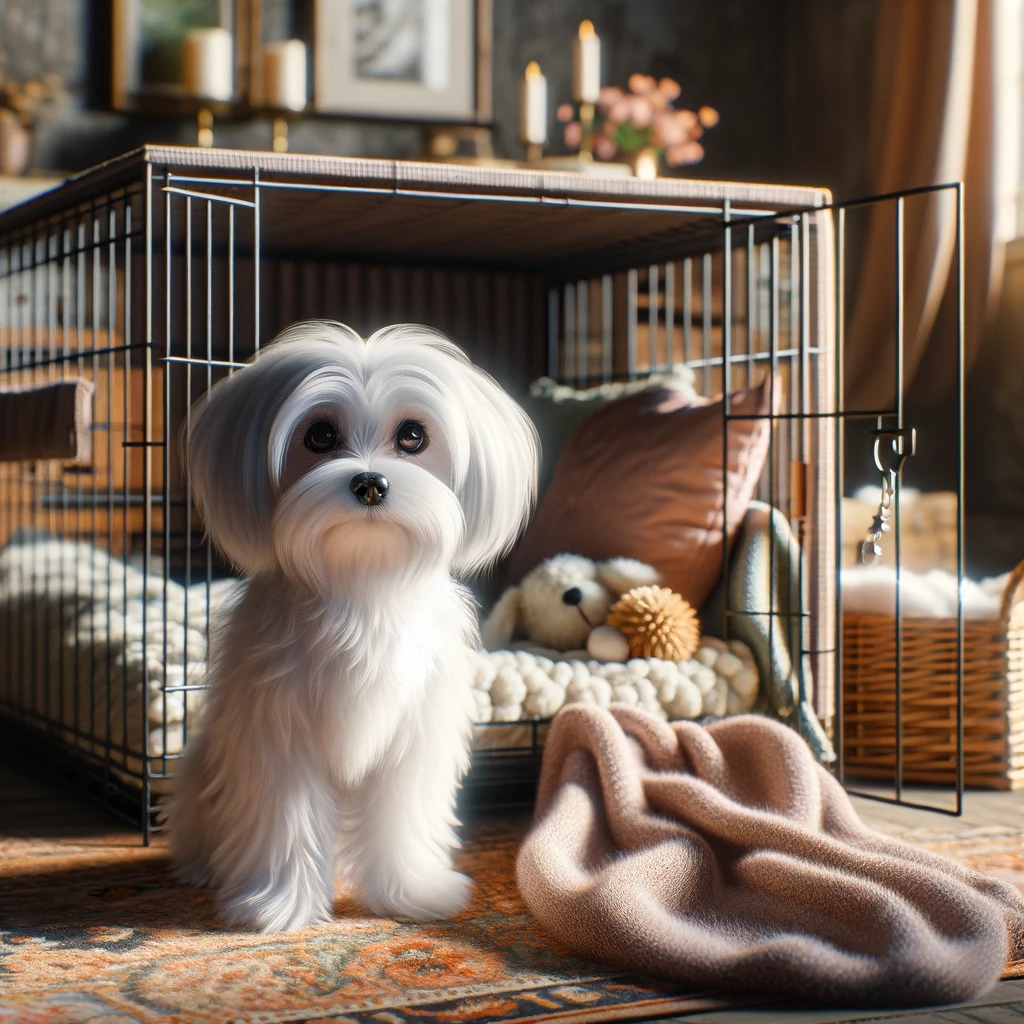
Training is a fundamental aspect of reducing separation anxiety in Maltese dogs. Consistent, positive training techniques can help your dog feel more secure and less anxious when left alone. Below are some effective training strategies to alleviate separation anxiety.
Crate Training
- Creating a Positive Association: Introduce the crate as a safe, comfortable space for your Maltese. Place their favorite toys, treats, and a comfortable bed inside the crate. Encourage your dog to explore the crate on their own terms, without forcing them inside.
- Gradual Introduction: Start by leaving the crate door open and allowing your dog to enter and exit freely. Gradually increase the time your dog spends inside the crate with the door closed, beginning with short periods and slowly extending the duration.
- Consistency and Routine: Make crate time a regular part of your dog’s daily routine. Use the crate for short periods while you are at home to help your dog associate it with relaxation and security, not just your absence.
RELATED: Crate Training Guide
Obedience Training
- Basic Commands: Teach your Maltese basic commands such as "sit," "stay," and "come." These commands can be incredibly helpful in managing your dog’s behavior and reinforcing calmness.
- Positive Reinforcement: Use positive reinforcement techniques, such as treats, praise, and affection, to reward your dog for obeying commands and exhibiting calm behavior. Avoid using punishment, as it can increase anxiety.
- Desensitization Exercises: Practice leaving your dog alone in a room while you are still at home. Use the "stay" command and gradually increase the distance and duration of the separation. Reward your dog for staying calm during these exercises.
Using Positive Reinforcement
- Rewards for Calm Behavior: Reward your Maltese for remaining calm during your departures and returns. This reinforcement helps your dog associate being alone with positive outcomes.
- Gradual Departure Training: Start with very short absences and gradually increase the time you are away. Each time you leave, give your dog a treat or a favorite toy to keep them occupied.
- Ignore Excessive Greetings: When you return home, wait until your dog is calm before giving them attention. This helps prevent reinforcing overly excited behavior upon your return.
RELATED: How to Train your Puppy
Socialization and Exposure
- Regular Socialization: Regularly expose your Maltese to new environments, people, and other dogs. This helps them become more adaptable and less anxious in different situations.
- Controlled Exposure: Gradually increase the level of exposure to new experiences. Start with low-stress environments and slowly introduce more challenging scenarios as your dog becomes more comfortable.
RELATED: Puppy Socialization Guide
Behavioral Interventions for Separation Anxiety
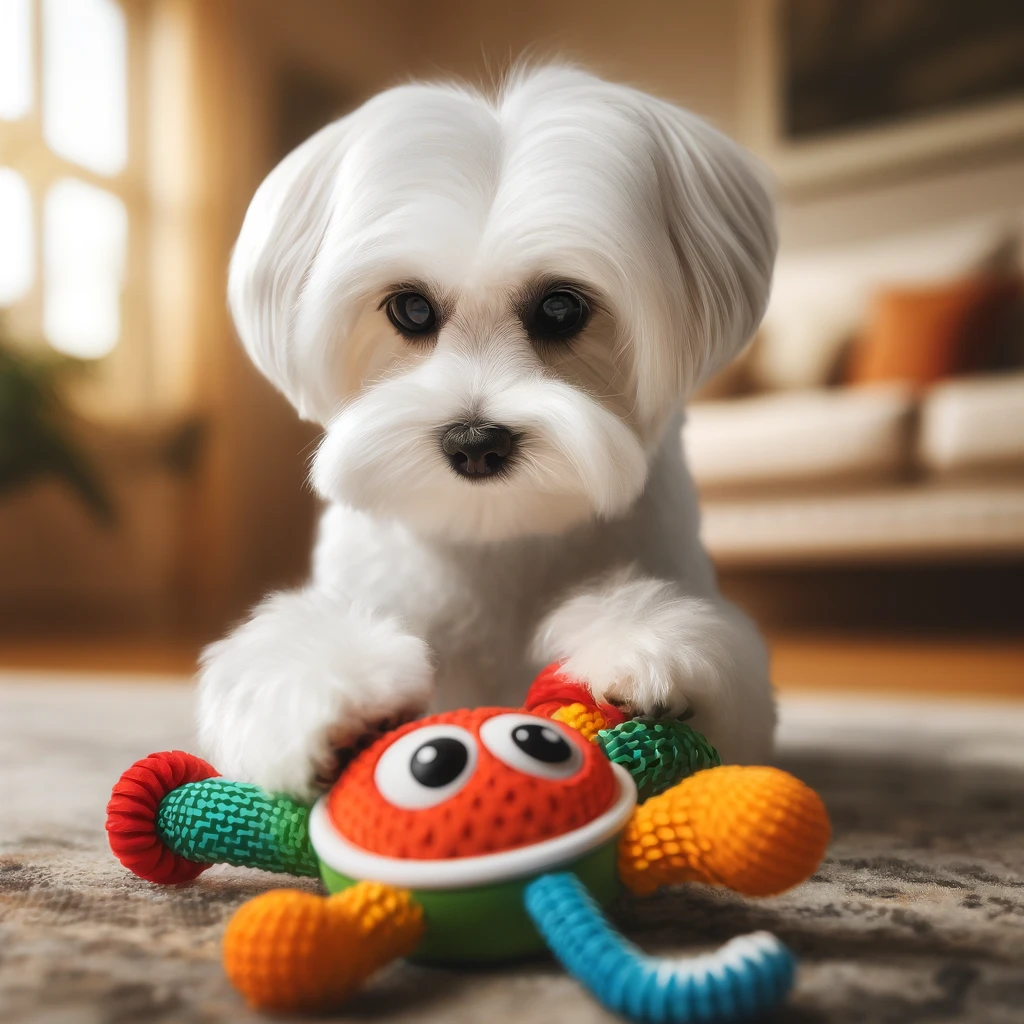
In addition to training techniques, implementing behavioral interventions can significantly help reduce separation anxiety in Maltese dogs. These interventions focus on providing distractions, calming aids, and creating a safe and engaging environment for your dog.
Distraction Techniques
Interactive Toys: Provide your Maltese with interactive toys that dispense treats or require problem-solving to keep them engaged. Toys like Kongs filled with peanut butter or puzzle feeders can occupy your dog’s mind and reduce anxiety.
Chew Toys: Durable chew toys can help alleviate anxiety by giving your dog something to focus on. Chewing is a natural stress-reliever for dogs, so having a variety of safe chew toys can be beneficial.
Rotating Toys: Keep your dog’s interest by rotating their toys regularly. Introducing new toys or swapping out old ones can prevent boredom and keep your dog engaged while you’re away.
Calming Aids
- Pheromone Diffusers: Products like Adaptil diffusers release synthetic pheromones that mimic the calming scent of a mother dog. These diffusers can help reduce anxiety and create a more relaxed environment for your Maltese.
- Anxiety Wraps: Anxiety wraps, such as the ThunderShirt, apply gentle, constant pressure to your dog’s body, which can have a calming effect similar to swaddling a baby. These wraps can be particularly helpful during times of heightened anxiety.
- Calming Sprays and Supplements: There are various calming sprays and natural supplements available that can help reduce anxiety in dogs. Ingredients like chamomile, valerian root, and CBD oil are often used for their calming properties.
Gradual Departure and Return Strategies
Practice Departures
Begin by practicing short departures and gradually increasing the time you are away. Start with leaving for just a few minutes and slowly extend the duration as your dog becomes more comfortable.
Stay Calm
Maintain a calm demeanor when leaving and returning home. Avoid making a big fuss over departures and arrivals, as this can heighten your dog’s anxiety. Instead, wait until your dog is calm before giving them attention.
Positive Associations
Create positive associations with your departures by giving your dog a special treat or toy that they only receive when you leave. This helps your dog associate your absence with something enjoyable.
Using Technology to Help with Separation Anxiety
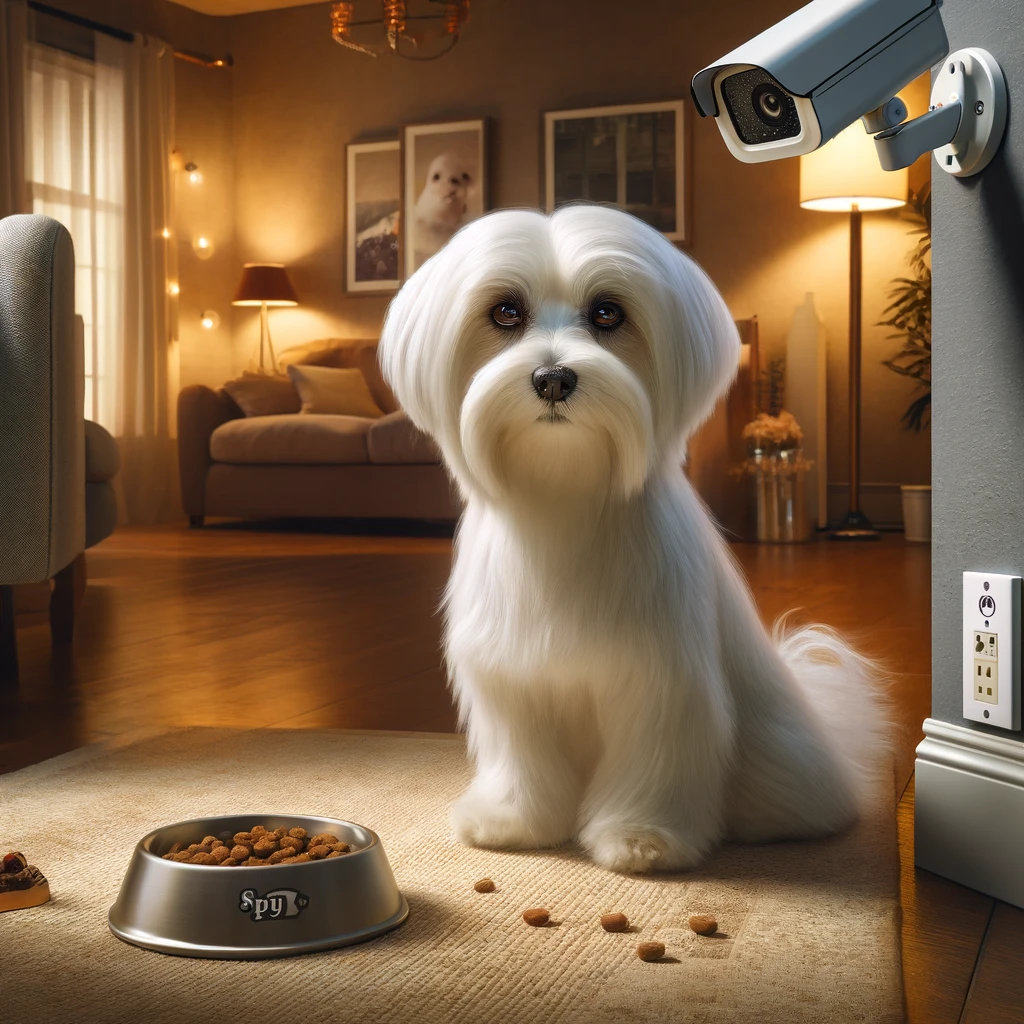
Modern technology offers various tools to assist in managing separation anxiety in Maltese dogs. These devices can provide comfort, interaction, and distraction, helping your dog feel more secure when left alone.
Pet Cameras
Monitoring Behavior: Pet cameras allow you to monitor your Maltese's behavior in real-time when you are away. This helps you understand how your dog is coping and identify any specific triggers of anxiety.
Two-Way Communication: Many pet cameras come with two-way audio, enabling you to talk to your dog and soothe them with your voice. Hearing your voice can provide reassurance and reduce anxiety.
Automated Treat Dispensers
Rewarding Calm Behavior: Automated treat dispensers can be programmed to dispense treats at intervals, rewarding your dog for calm behavior. This positive reinforcement helps create a more relaxed environment.
Interactive Features: Some treat dispensers come with interactive features like games and puzzles, which can keep your Maltese engaged and mentally stimulated while you’re away.
Calming Music and Sounds
Music Apps: Several apps and streaming services offer playlists specifically designed to calm dogs. Playing soothing music or white noise can create a peaceful atmosphere and help reduce anxiety.
Sound Machines: White noise machines can mask outside noises that might trigger anxiety. A consistent, calming background noise can help your dog feel more secure.
Smart Home Devices
Automatic Lights: Smart lights can be programmed to turn on and off at certain times, simulating your presence and providing comfort to your dog.
Climate Control: Smart thermostats ensure that your home remains at a comfortable temperature for your dog, preventing discomfort that could exacerbate anxiety.
Pet-Tracking Devices
Health Monitoring: Pet trackers can monitor your dog’s activity levels and health metrics, providing insights into their behavior and well-being. Some devices alert you to unusual activity, indicating potential stress or anxiety.
Location Tracking: In case of escape attempts, GPS-enabled collars can help you quickly locate your dog and ensure their safety.
Professional Help for Severe Cases
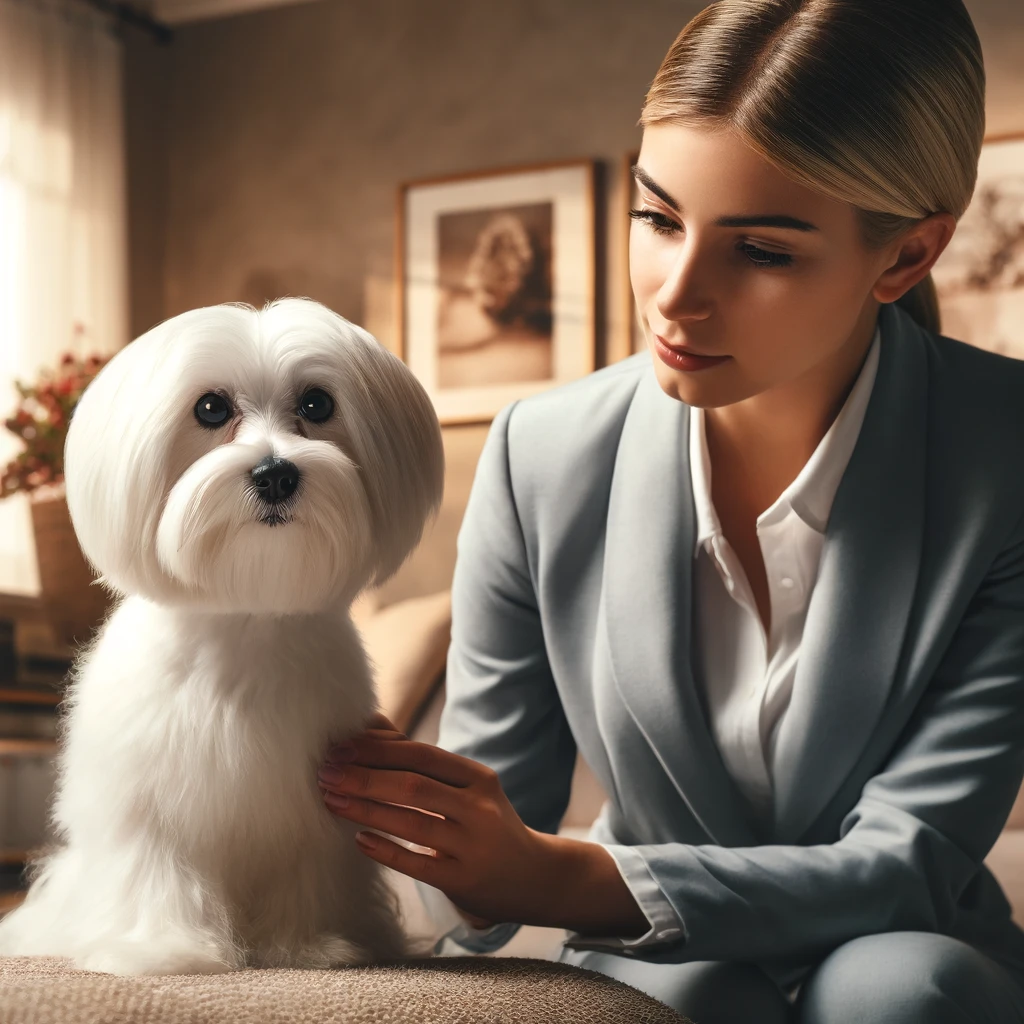
In severe cases of separation anxiety, professional help may be necessary to manage and alleviate your Maltese dog's distress. Experts can provide tailored strategies and interventions to address the specific needs of your dog.
Consulting a Veterinarian
- Medical Evaluation: A veterinarian can assess whether your Maltese's anxiety is due to underlying medical issues. Conditions such as thyroid imbalances or neurological disorders can contribute to anxiety and need to be ruled out.
- Medication Options: In some cases, a veterinarian might prescribe medication to help manage your dog's anxiety. Anti-anxiety medications or natural supplements can be part of a comprehensive treatment plan.
Hiring a Dog Behaviorist
- Behavioral Assessment: A certified dog behaviorist can conduct a thorough assessment of your Maltese's behavior and identify specific triggers and patterns of anxiety.
- Customized Training Plan: Behaviorists develop customized training plans that address the root causes of your dog's anxiety. These plans often include desensitization and counter-conditioning techniques.
- Ongoing Support: Behaviorists provide ongoing support and adjustments to the training plan as needed, ensuring that progress is made and sustained over time.
Dog Trainers Specializing in Anxiety
- Targeted Training: Professional dog trainers with experience in anxiety issues can implement targeted training techniques to reduce anxiety. This can include crate training, obedience training, and independence training.
- Positive Reinforcement: Trainers focus on positive reinforcement methods to encourage calm behavior and build your dog's confidence.
Dog Daycare and Boarding
- Daycare Services: Dog daycare facilities can provide socialization and a safe environment for your Maltese during the day. Regular attendance can help reduce anxiety by providing structured activity and interaction with other dogs.
- Short-Term Boarding: If you need to be away for extended periods, consider short-term boarding at a reputable facility. Ensure the staff is trained to handle dogs with anxiety and that the environment is calm and supportive.
RELATED: Benefits of Doggy Daycare
Group Classes and Workshops
- Behavior Modification Classes: Some trainers and behaviorists offer group classes specifically designed for dogs with separation anxiety. These classes provide structured environments to practice techniques and offer support from other dog owners.
- Owner Education Workshops: Workshops that educate owners on managing separation anxiety can be invaluable. They offer practical advice, demonstrations, and the opportunity to ask questions and share experiences.
Online Resources and Support
- Virtual Consultations: Many professionals offer virtual consultations, providing access to expert advice and support regardless of your location.
- Support Groups: Online forums and support groups for dog owners dealing with separation anxiety can be a valuable resource. Sharing experiences and solutions with others facing similar challenges can be encouraging and informative.
Common Mistakes to Avoid
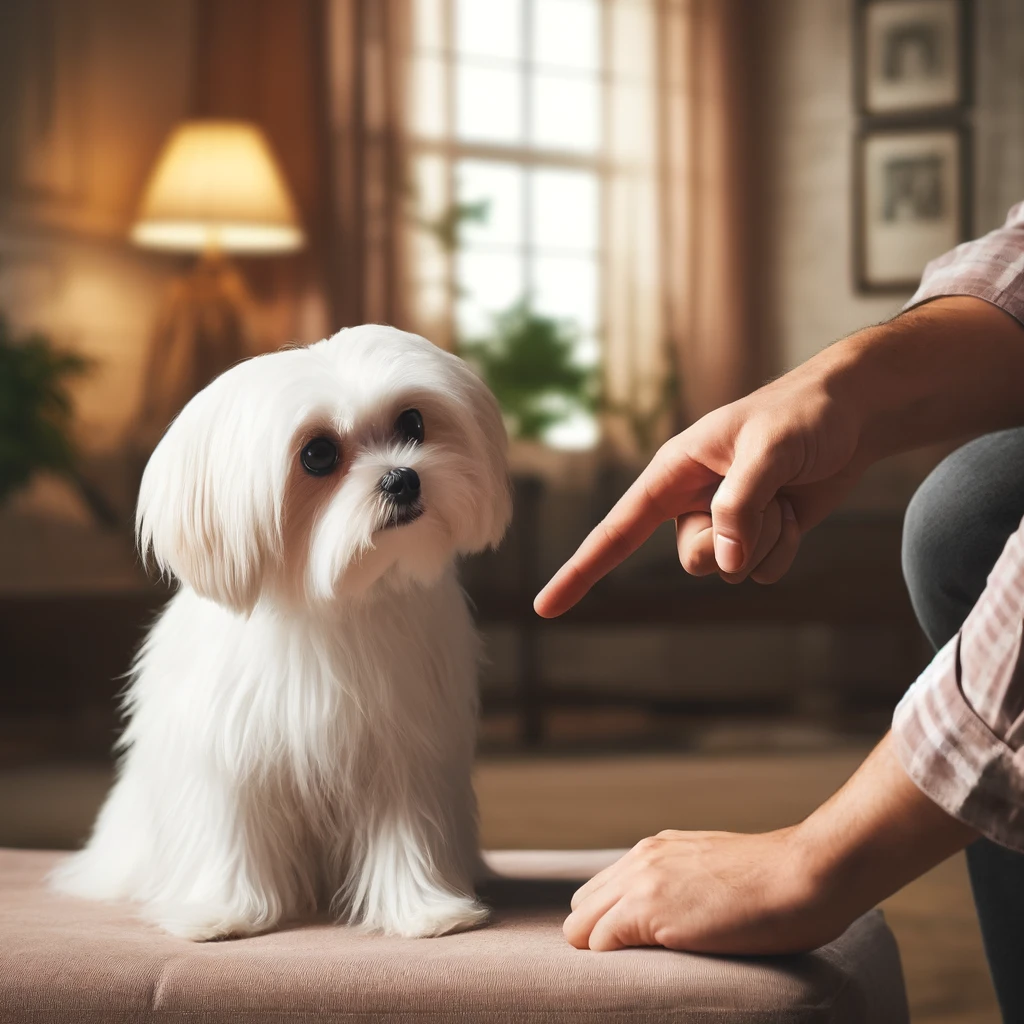
When managing separation anxiety in Maltese dogs, it's essential to avoid certain common mistakes that can inadvertently exacerbate the problem. Here are some pitfalls to be aware of:
Punishing the Dog
Avoid Negative Reinforcement: Punishing your dog for anxiety-driven behaviors such as barking, chewing, or having accidents indoors can increase their stress levels and worsen their anxiety. Instead, focus on positive reinforcement to encourage calm behavior.
Inconsistent Routines
Maintain Consistency: Dogs thrive on routine. Inconsistent feeding times, exercise schedules, and departure routines can confuse your dog and heighten their anxiety. Establish a consistent daily schedule to provide stability and predictability.
Prolonged Departures and Emotional Returns
Minimize Drama: Making a big fuss when leaving or returning home can reinforce your dog's anxiety. Keep your departures and arrivals low-key and calm. This helps your dog understand that your comings and goings are a normal part of the day.
Ignoring Early Signs
Early Intervention: Don't ignore early signs of separation anxiety. Early intervention is crucial to prevent the problem from worsening. Addressing mild anxiety with gradual desensitization and positive reinforcement can prevent more severe symptoms.
Lack of Mental and Physical Stimulation
Provide Adequate Stimulation: Boredom can exacerbate anxiety. Ensure your Maltese gets plenty of physical exercise and mental stimulation through walks, playtime, and interactive toys. Keeping your dog's mind and body active helps reduce anxiety levels.
Leaving the Dog Alone for Extended Periods
Gradual Alone Time: Avoid leaving your dog alone for long periods without prior gradual training. Start with short absences and gradually increase the duration as your dog becomes more comfortable with being alone.
Not Seeking Professional Help
Consult Experts: In severe cases, managing separation anxiety on your own can be challenging. Don’t hesitate to seek help from veterinarians, dog behaviorists, or professional trainers who can provide specialized strategies and support.
Inadequate Preparation for Departures
Practice Runs: Prepare your dog for your departures through practice runs. Gradually increasing the time you leave can help desensitize your dog to your absence and reduce their anxiety.
Overly Dependent Relationship
Encourage Independence: Foster your dog's independence by encouraging them to spend time alone while you are at home. Use baby gates to create a safe space where they can be alone without feeling completely isolated.
Ignoring Your Own Stress
Manage Your Anxiety: Your dog can pick up on your stress and anxiety, which can make their own anxiety worse. Practice self-care and stress management techniques to ensure you remain calm and composed.
Conclusion
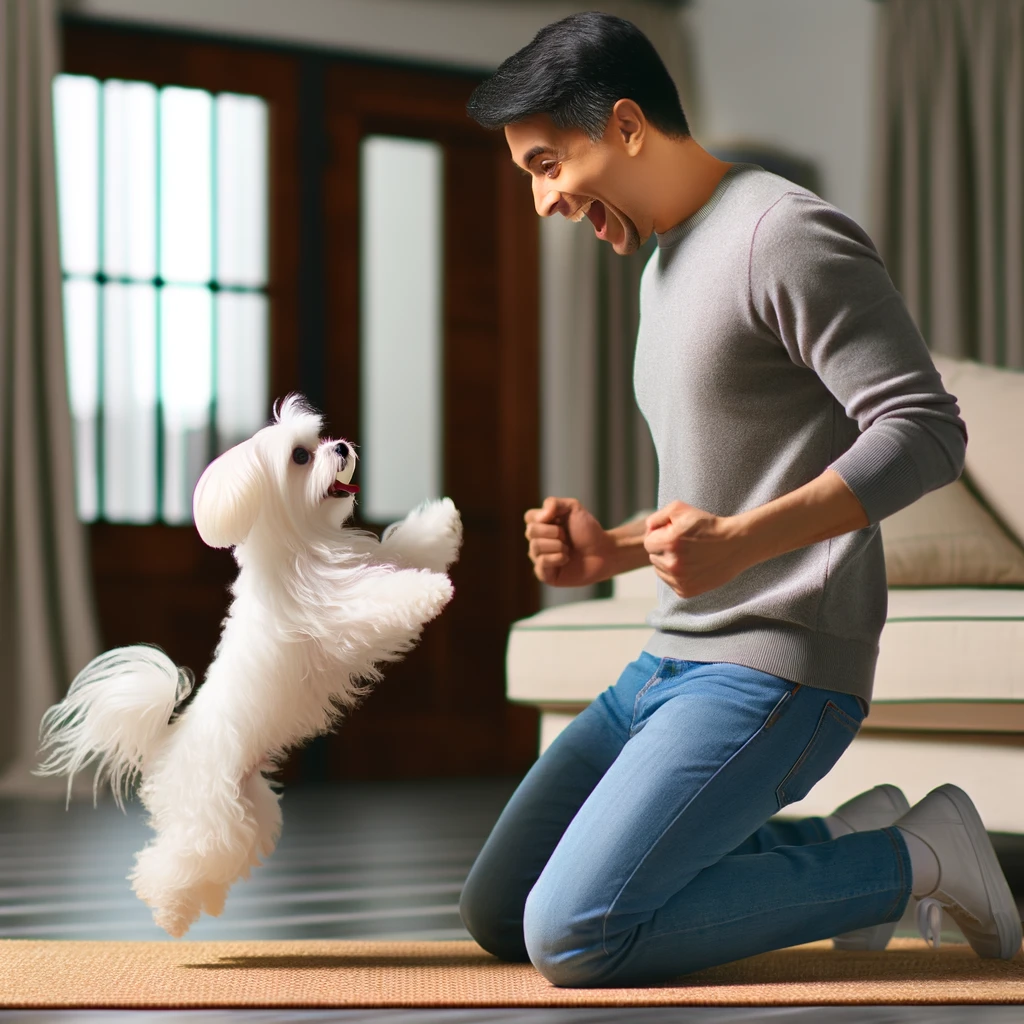
Handling separation anxiety in Maltese dogs requires a consistent and proactive approach. Understanding the causes and symptoms of separation anxiety allows you to implement effective strategies to manage and reduce your dog's distress.
Key Takeaways:
- Early Intervention: Recognize signs of separation anxiety and start with gradual desensitization and positive reinforcement.
- Consistent Routine: Maintain a regular daily routine to provide stability and reduce anxiety.
- Physical and Mental Stimulation: Ensure your dog gets regular exercise and mental challenges to prevent boredom and reduce anxiety.
- Create a Safe Space: Provide a comfortable, secure area for your dog to retreat to when alone.
- Use Technology: Utilize pet cameras, automated treat dispensers, and calming music apps to monitor and soothe your dog.
- Seek Professional Help: For severe cases, consult veterinarians, dog behaviorists, or trainers for specialized support.
What To Read Next
15 Best Dog Breeds for First-Time Owners
7 Best Apartment Dog Breeds
Frequently Asked Questions
How can I tell if my Maltese has separation anxiety? Recognizing separation anxiety in Maltese dogs involves observing their behavior when they are left alone. Common signs include excessive barking, whining, or howling, destructive behaviors like chewing and digging, attempts to escape, pacing, drooling, and having accidents indoors despite being house-trained. If your dog exhibits these symptoms shortly after you leave and they persist until you return, it's likely they are experiencing separation anxiety.
Are there any toys that can help with my Maltese's anxiety? Interactive toys and puzzle feeders can be very effective in managing separation anxiety. Toys that dispense treats or require problem-solving can keep your dog mentally stimulated and distracted from their anxiety.
Will my dog have separation anxiety forever? Unless treated, separation anxiety can be something your dog experiences throughout its lifetime.




